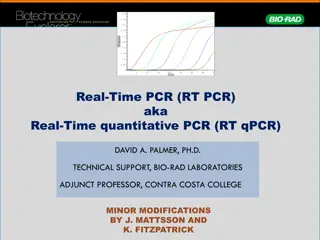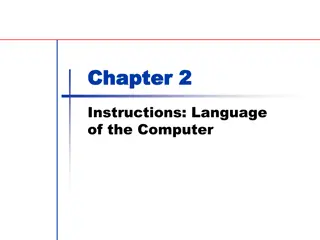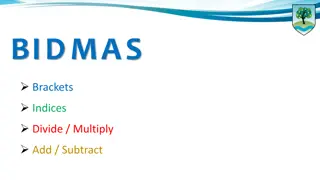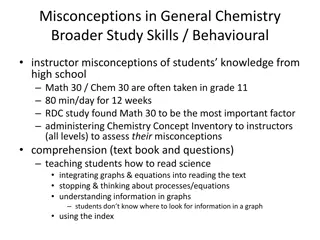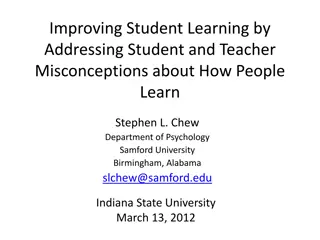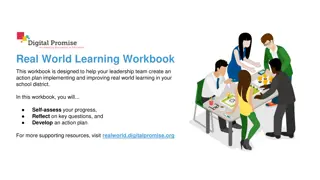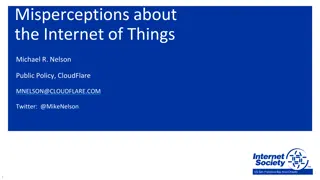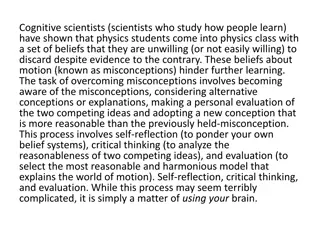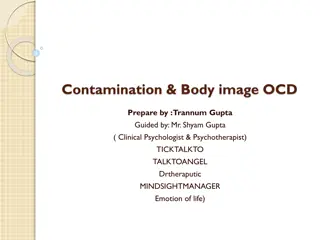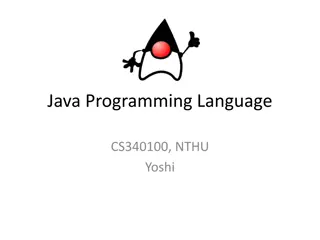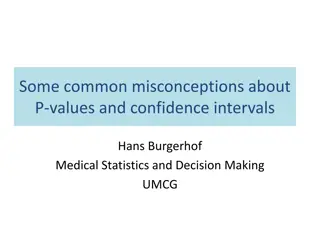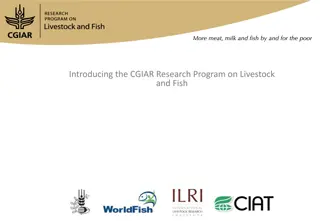Understanding Operations Research: Misconceptions and Real-World Applications
Operations Research (O.R.) is often misunderstood as just a collection of mathematical tools, but it is actually a systematic approach to problem-solving using analytical techniques. This article addresses common misconceptions about O.R. and highlights its broad scope in tackling real-world issues. Examples of successful applications are provided to showcase the significant benefits it can bring when applied properly.
Download Presentation

Please find below an Image/Link to download the presentation.
The content on the website is provided AS IS for your information and personal use only. It may not be sold, licensed, or shared on other websites without obtaining consent from the author. Download presentation by click this link. If you encounter any issues during the download, it is possible that the publisher has removed the file from their server.
E N D
Presentation Transcript
OPERATION RESEARCH AND ITS APPLICATIONS
WHAT IS OR A common misconception held by many is that O.R. is a collection of mathematical tools. While it is true that it uses a variety of mathematical techniques, research has a much broader scope. It is in fact a systematic approach problems, which uses one or more analytical tools in the process of analysis. Perhaps the single biggest problem with O.R. is its name; to a layperson, the term "operations research" does not conjure up any sort of meaningful image operations to solving
RESEARCH APPROACH OF OR A common misconception held by many is that O.R. is a collection of mathematical tools. While it is true that it uses a variety of mathematical techniques, research has a much broader scope. It is in fact a systematic approach to solving problems, which analytical tools in the process of analysis. Perhaps the single biggest problem with O.R. is its name; to a layperson, the term "operations research" does not conjure up any sort of meaningful image operations uses one or more
O.R. IN THE REAL WORLD In this section some examples of successful real-world applications of operations research are provided. These should give the reader an appreciation for the diverse kinds of problems that O.R. can address, as well as for the magnitude of the savings that are possible. Without any doubt, the best source for case studies and details of successful applications is the journal Interfaces, which is a publication of the Institute for Operations Research and the Management Sciences (INFORMS). This journal is oriented toward the practitioner and much of the exposition is in laypersons' terms; at some point, every practicing industrial engineer should refer to this journal to appreciate the contributions that O.R. can make. All of the applications that follow have been extracted from recent issues of Interfaces. Before describing these applications, a few words are in order about the standing of operations research in the real world. An unfortunate reality is that O.R. has received more than its fair share of negative publicity. It has sometimes been looked upon as an esoteric science with little relevance to the real-world, and some critics have even referred to it as a collection of techniques in search of a problem to solve! Clearly, this criticism is untrue and there is plenty of documented evidence that when applied properly and with a problem-driven focus, O.R. can result in benefits that can be quite spectacular; the examples that follow in this section clearly attest to this fact.
OR IN THE REAL WORLD On the other hand, there is also evidence to suggest that (unfortunately) the criticisms leveled against O.R. are not completely unfounded. This is because O.R. is often not applied as it should be - people have often taken the myopic view that O.R. is a specific method as opposed to a complete and systematic process. In particular, there has been an inordinate amount of emphasis on the modeling and solution steps, possibly because these clearly offer the most intellectual challenge. However, it is critical to maintain a problem-driven focus - the ultimate aim of an O.R. study is to implement a solution to the problem being analyzed. Building complex models that are ultimately intractable, or developing highly efficient solution procedures to models that have little relevance to the real world may be fine as intellectual exercises, but run contrary to the practical nature of operations research! Unfortunately, this fact has sometimes been forgotten. Another valid criticism is the fact that many analysts are notoriously poor at communicating the results of an O.R. project in terms that can be understood and appreciated by practitioners who may not necessarily have a great deal of mathematical sophistication or formal training in O.R. The bottom line is that an O.R. project can be successful only if sufficient attention is paid to each of the seven steps of the process and the results are communicated to the end-users in an understandable form.
Production Planning at Harris Corporation - Semiconductor Section we look at an area that is readily appreciated by every industrial engineer - production planning and due date quotation. The semiconductor section of Harris Corporation was for a number of years a fairly small business catering to a niche market in the aerospace and defense industries where the competition was minimal. However, in 1988 a strategic decision was made to semiconductor product lines and manufacturing facilities. This immediately increased the size of Harris Semiconductor's operations and product lines by roughly three times, and more importantly, catapulted Harris into commercial market areas such as automobiles and telecommunications where the competition was stiff. Given the new diversity of product lines and the tremendous increase in the complexity of production planning, Harris was having a hard time meeting delivery schedules and in staying competitive from a financial perspective; clearly, a better system was required. acquire General Electric's
Gasoline Blending at Texaco For another application to production planning, but this time in a continuous as opposed to discrete production environment, we look at a system in use at Texaco [2]. One of the major applications of O.R. is in the area of gasoline blending at petroleum refineries, and virtually all major oil companies use sophisticated optimization models in this area. At Texaco the system is called StarBlend and runs on networked microcomputers. As some background, the distillation of crude petroleum produces a number of different products at different distillation temperatures. Each of these may be further refined through cracking (where complex hydrocarbons are broken into simpler ones) and recombination. These various output streams are then blended together to form end-products such as different grades of gasoline (leaded, unleaded, super-unleaded etc.), jet fuel, diesel and heating oil. The planning problem is very complex, since different grades of crude yield different concentrations of output streams and incur different costs, and since different end-products fetch different revenues and use different amounts of refinery resources. Considering just one product - gasoline - there are various properties that constrain the blends produced. These include the octane number, lead and sulfur content, volatilities and Reid vapor pressure, to name a few. In addition, regulatory constraints impose certain restrictions as well.
FMS Scheduling at Caterpillar For our third application we look at the use of a simulation model. This model was applied to derive schedules for a Flexible Manufacturing System (FMS) at Caterpillar, Inc. [3]. The interested reader may refer to any text on computer integrated manufacturing for details about FMSs; typically, they are systems of general purpose CNC machines linked together by an automated material handling system and completely controlled by computers. The FMS in question at Caterpillar had seven CNC milling machines, a fixturing station and a tool station, with material and tool handling being performed by four automated guided vehicles (AGVs) traveling along a one-way guided wire path. FMSs can provide tremendous increases in capacity and productivity because of the high levels of automation inherent in them and their potential to manufacture a wide variety of parts. On the other hand, this comes with a price; these systems are also very complex and the process of planning and scheduling production on an FMS and then controlling its operation can be a very difficult one. The efficiency of the scheduling procedure used can have a profound effect on the magnitude of the benefits realized.
Fleet Assignment at Delta Airlines One of the most challenging as well as rewarding application areas of O.R. has been the airline industry. We briefly describe here one such application at Delta Airlines [4]. The problem solved is often referred to as the fleet assignment problem. Delta flies over 2500 domestic flight legs each day and uses about 450 aircraft from 10 different fleets, and the objective was to assign aircraft to flight legs in such a way that revenues from seats are maximized. The tradeoff is quite simple - if a plane is too small then the airline loses potential revenue from passengers who cannot be accommodated on board, and if it is too large then the unoccupied seats represent lost revenue (in addition to the fact that larger aircraft are also more expensive to operate). Thus the objective is to ensure that an aircraft of the "correct" size be available when required and where required. Unfortunately, ensuring that this can happen is tremendously complicated since there are a number of logistical issues that constrain the availability of aircraft at different times and locations.
KeyCorp Service Excellence Management System our final application we turn to the service sector and an industry that employs many industrial engineers - banking. This application [5] demonstrates how operations research was used to enhance productivity and quality of service at KeyCorp, a bank holding Cleveland, Ohio. Faced with increasing competition from nontraditional sources and rapid consolidation within the banking industry, KeyCorp's aim was to provide a suite of world-class financial products and services as opposed to being a traditional bank. The key element in being able to do this effectively is high-quality customer service and a natural trade-off faced by a manager was in terms of staffing and service - better service in the form of shorter waiting times required additional staffing which came at a higher cost. The objective of the project was to provide managers with a complete decision support system which was dubbed SEMS (Service Excellence Management System). company headquartered in
SUMMARY This operations research, its origins, its approach to solving problems, and some examples of successful applications. From the standpoint of an industrial engineer, O.R. is a tool that can do a great deal to improve productivity. It should be emphasized that O.R. is neither esoteric nor impractical, and the interested I.E. is urged to study this topic further for its techniques as well as its applications; the potential rewards can be enormous. chapter provides an overview of






